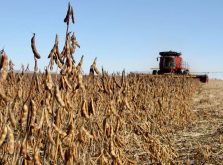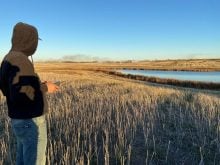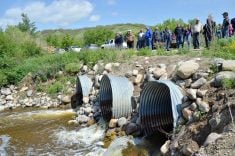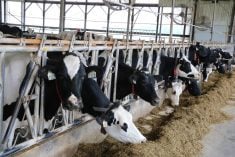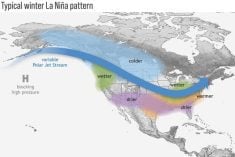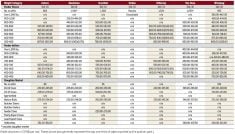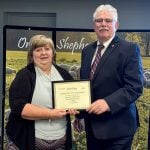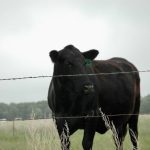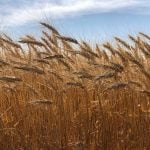An initial look at Manitoba’s first hay cut suggests normal to below normal yields, although not everyone has hit the swather yet.
Dairy producers are mostly done their first cuts, while many beef growers are just getting started, said Cindy Jack, livestock and forage extension specialist with Manitoba Agriculture on June 17.
Alfalfa has so far weathered Manitoba’s dry spring better than the grass, she noted, something she credited to the legume’s root structure. At the time of her comments to the Co-operator, most alfalfa had entered early bloom and grasses were starting to head out.
Read Also
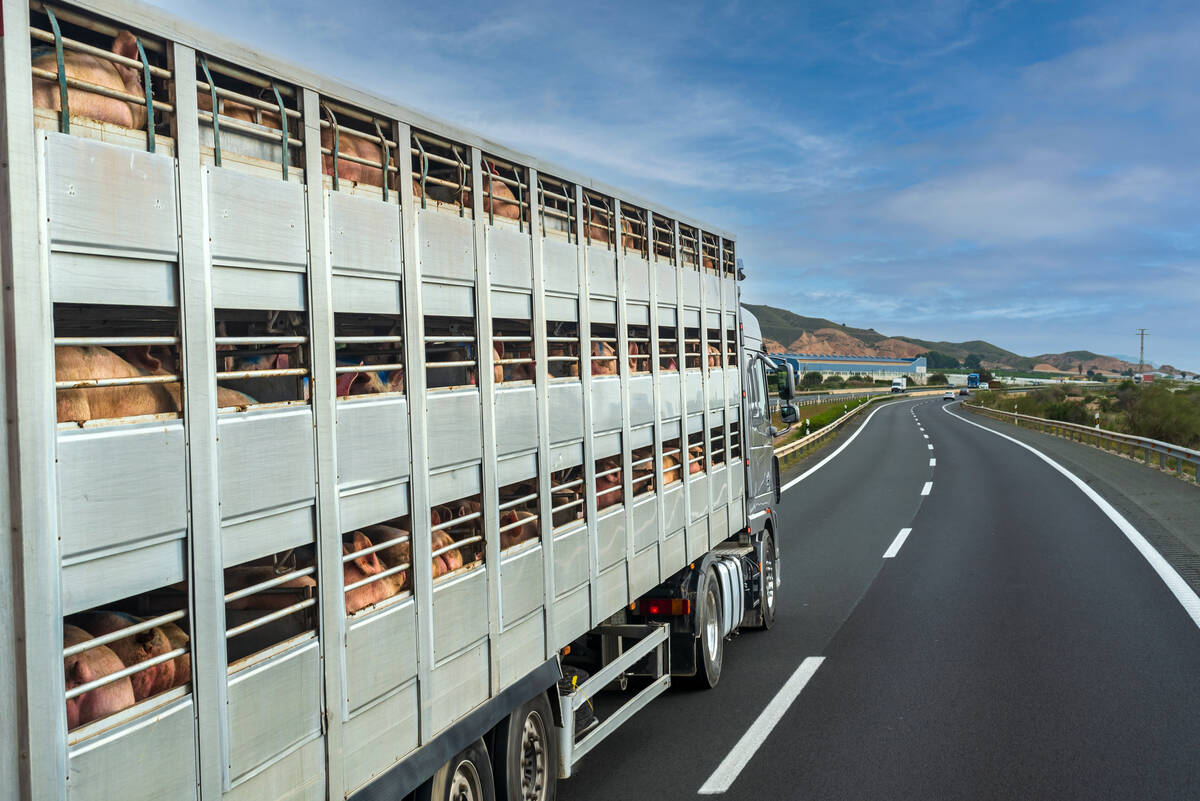
Pig shipments to U.S. slow as new COOL looms
A Manitoba pork marketer says some U.S. processors have shut their doors to Canadian pigs as enforcement of U.S. voluntary country of origin labelling (vCOOL) looms.
Jack also suggested that overall forage growth was being compromised by older stands and fields that did not receive fertilizer. “(They) generally have lower productivity.”
WHY IT MATTERS: Manitoba saw some rain in May and June but, for the most part, the growing season has been dry, and farmers have been warned that summer 2025 will likely bring more of the same.
The prognosis for further hay cuts will be weather dependant, she added.
“Without significant rainfall soon, regrowth will be limited due to moisture stress, reducing the likelihood of subsequent cuts.
“Rain in the coming weeks will be critical to support continued forage production and maintain hay supply through the rest of the season.”
Up until June 15, Manitoba Agriculture weather data reported that almost all of the province was significantly behind on rainfall. Patches of the southwest had cracked 80 per cent of normal precipitation, but most of the northwest, Interlake and eastern Manitoba largely sat under 60 per cent. Central Manitoba split the difference.
Parts of the province did see moisture over the second-last weekend of June. Rain over eastern Manitoba June 22 varied from a scant few millimetres to 45-57 millimetres (mm) reported by Prawda and Sprague Lake. Central Manitoba topped out at just over 23 mm near Somerset, although most stations in both that region and the rest of the province reported under 16 mm.
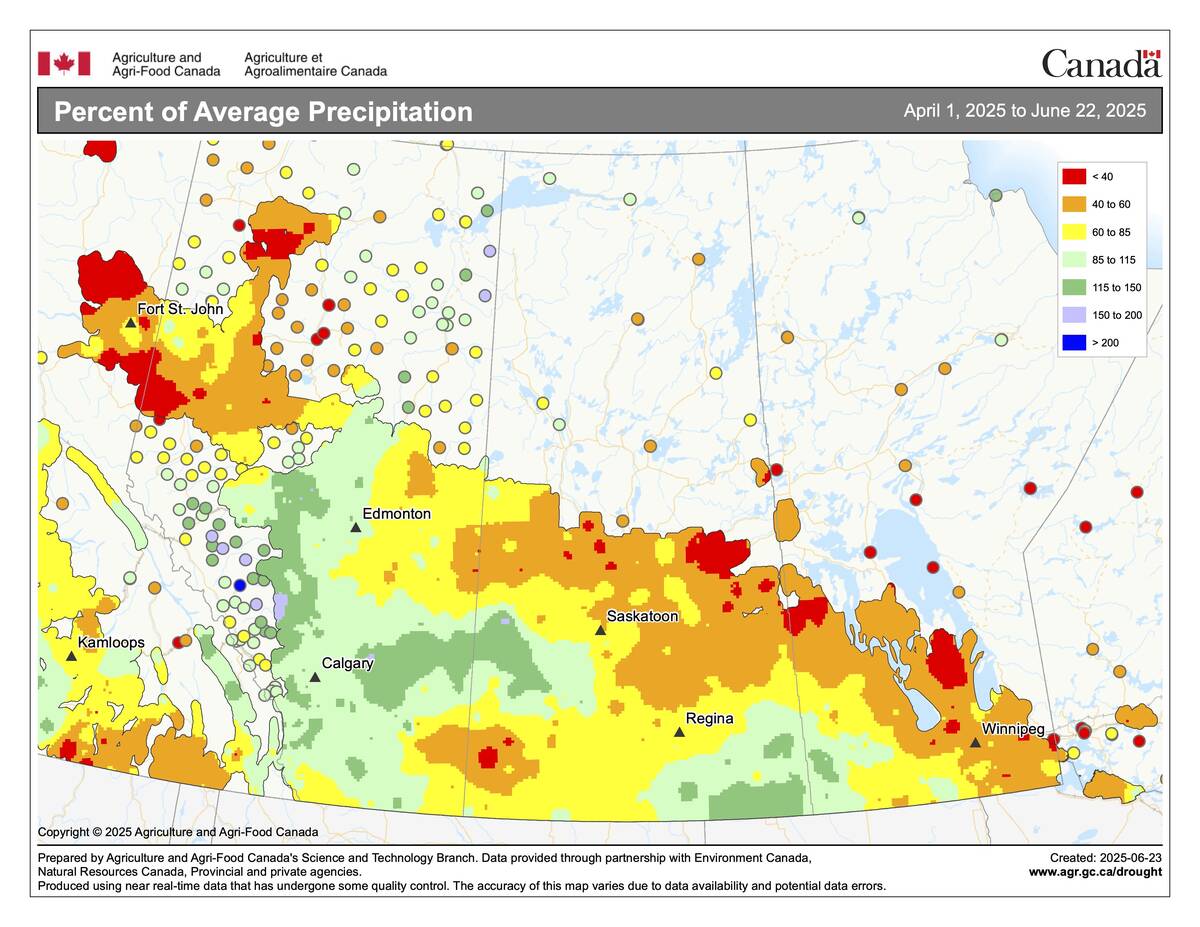
Southeastern Manitoba dairy farmer Stefan Signer echoed Jack’s concerns.
“At this point, we are really hoping and needing some rain so that the fields can recover for maybe a second and maybe a third cut,” the Kleefeld-area farmer said.
Field conditions on his farm are currently dry, he added. That meant good harvest conditions to cut alfalfa, uninterrupted by the rain that sometimes plagues Manitoba hay harvest timing. There was moderate heat, but weather wasn’t exceptionally hot during the time they wanted to cut, and the farm enjoyed an extended harvest window that added flexibility to his harvest.
“If I could sum it up, it would be quality is maybe slightly better than normal, quantity slightly worse than normal,” he said.
Other farmers in his area also had their alfalfa come off in good condition, he added.
Manitoba Agriculture’s June 17 crop report noted that some producers have plans to graze fenced hay fields or have changed fall rye plans from grain to silage.
The same crop report said pasture conditions were largely dry provincewide.
Pastures are holding for now, but it is becoming increasingly evident that animals will need to be supplemented or removed from current grazing systems as the summer continues,” the department warned.
Annual forages help feed picture
Signer noticed more farmers in his area planted winter cover crops and forages last fall.
“Fall rye is getting more and more popular and last fall we had a really great month for that to get established. So it went into the winter in good condition and, this spring, mine turned out fantastic, and I know some others who are growing some were very happy with how it turned out this year,” Signer said.
“It’s definitely very healthy for the soil to have that winter cover crop in place. It also kind of protects us from those years where there is a lot of winterkill, where the alfalfa is in rough shape coming out of the winter.”
In those years, the fall rye is not only an extra forage source in spring, it also allows the producer to put in a summer annual forage mix to take some pressure off the lackluster hay later in the season.
Wildfires a wild card
Manitoba hay stands have spent a lot of time over the last two months blanketed in wildfire smoke.
Jack noted that forest fires can have both direct and indirect effects on hay and forage production, depending on fire proximity, smoke intensity and how long those conditions persist.
”Ongoing forest fire smoke has reduced sunlight levels in some areas, which may impact photosynthesis and slow forage growth,” she said.
“Coupled with heat and dry conditions causing an increase in plant stress, this could lead to reduced hay yields if smoke persists through key growing stages, especially during early vegetative or regrowth phases which can lead to lower biomass production and ultimately reduce overall hay yield.”
Dry in the west
Manitoba is far from the only area of the Prairies needing rain.
Calvin Gavelin, who runs a mixed farm on the south-central side of Saskatchewan, said the continuing dry weather and lack of subsoil moisture set his forage season off to a bad start.
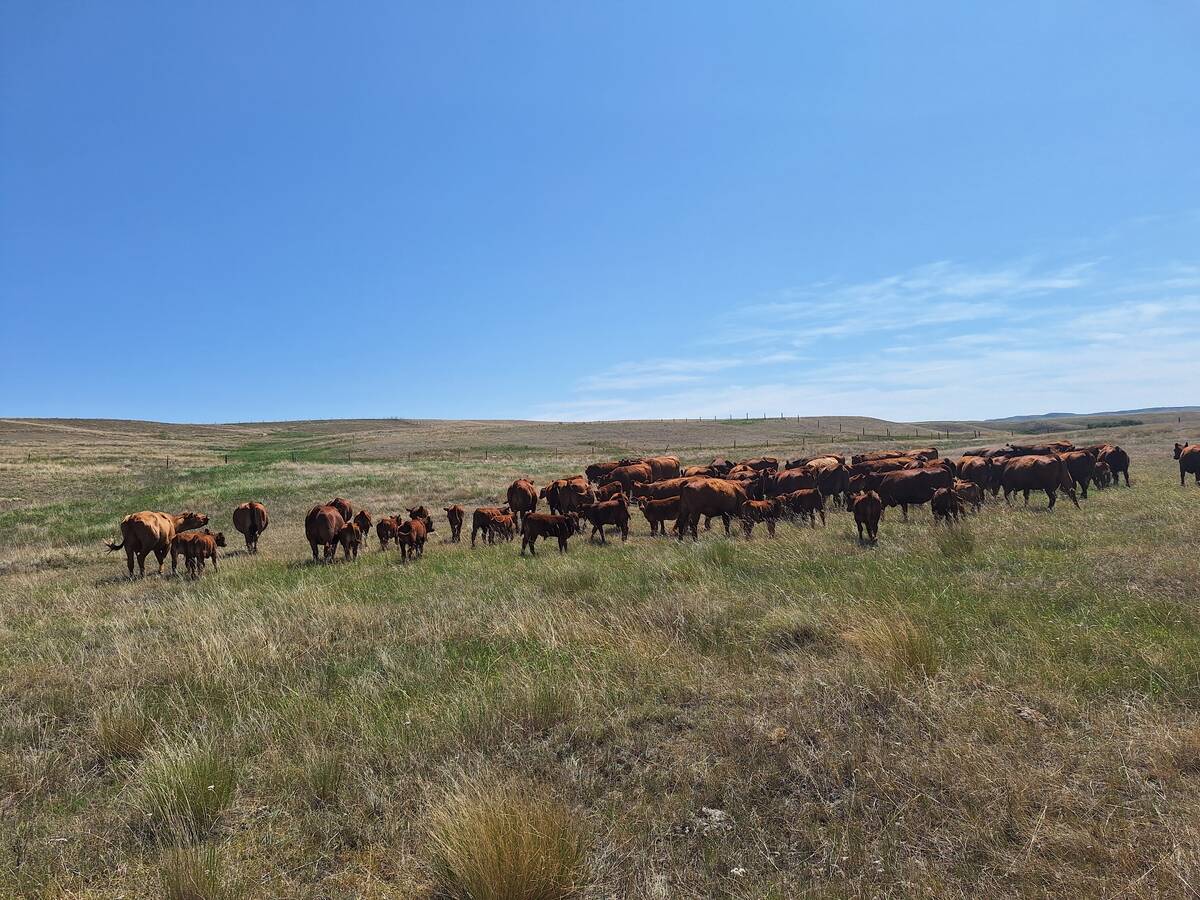
That’s been par for the course for producers in the Palliser’s Triangle region. The region has now racked up about seven years of drought.
His perennial forages never even got off the ground in 2025.
“Our snow went in February and then we had two-tenths of moisture in March and April. So all our grass and our hay is basically done and, because the hay is very sparse and about six inches tall, we’re going to manage on litter and carryover.”
However, a surprise rain over the May long weekend benefited his annuals.
“Everything (has) all germinated. It didn’t help the other stuff, because it was all gone dormant, but our annuals are our gold star plan if it works.”
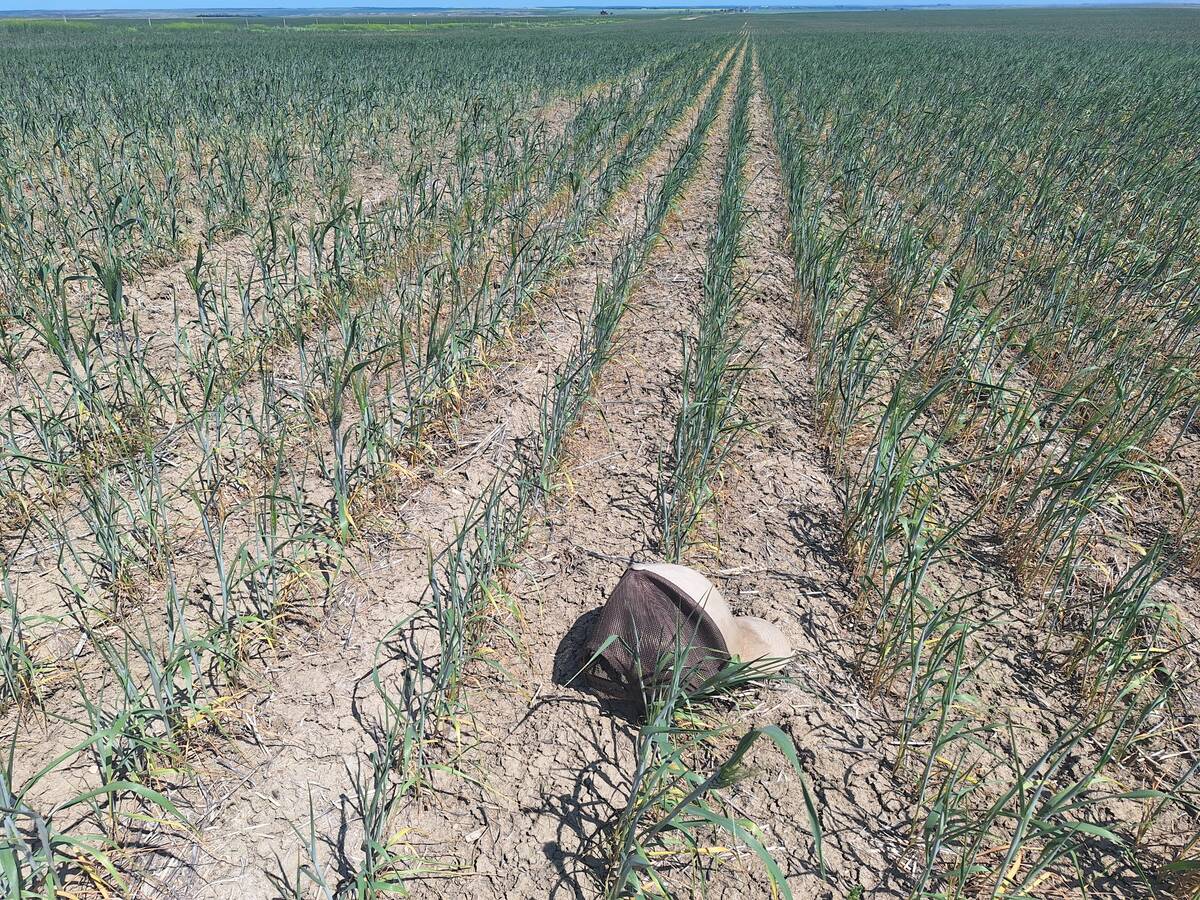
Duane Thompson runs a mixed farm between Wynyard and Fort Qu’Appelle, Sask., a region that has seen better moisture.
Although rain has been sparse this year, a good hit of fall snow that melted into unfrozen soil, plus some marginal rain this spring, has replenished Thompson’s water supply, giving his hay crop and forages a chance to grow.
Thompson has three quarters from which he plans to make haylage.
“It’s not going to be stellar, no, but we’re going to give it time. It’s got some clover in it that hopefully will spring up and give it a little bit more volume. The clover is pretty reasonable.” —With files from Janelle Rudolph and Miranda Leybourne




